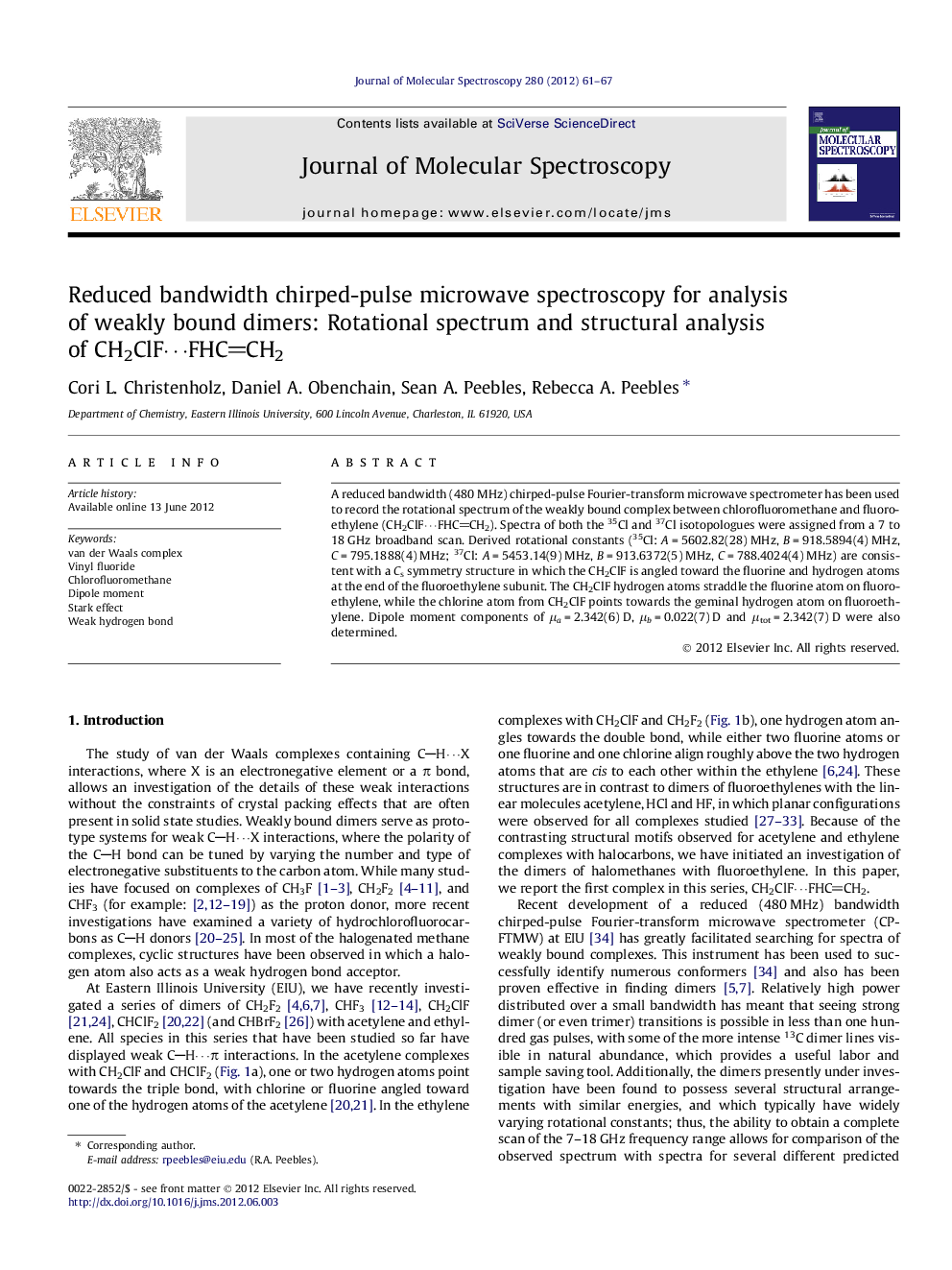| Article ID | Journal | Published Year | Pages | File Type |
|---|---|---|---|---|
| 5414831 | Journal of Molecular Spectroscopy | 2012 | 7 Pages |
A reduced bandwidth (480 MHz) chirped-pulse Fourier-transform microwave spectrometer has been used to record the rotational spectrum of the weakly bound complex between chlorofluoromethane and fluoroethylene (CH2ClFâ¯FHCCH2). Spectra of both the 35Cl and 37Cl isotopologues were assigned from a 7 to 18 GHz broadband scan. Derived rotational constants (35Cl: A = 5602.82(28) MHz, B = 918.5894(4) MHz, C = 795.1888(4) MHz; 37Cl: A = 5453.14(9) MHz, B = 913.6372(5) MHz, C = 788.4024(4) MHz) are consistent with a Cs symmetry structure in which the CH2ClF is angled toward the fluorine and hydrogen atoms at the end of the fluoroethylene subunit. The CH2ClF hydrogen atoms straddle the fluorine atom on fluoroethylene, while the chlorine atom from CH2ClF points towards the geminal hydrogen atom on fluoroethylene. Dipole moment components of μa = 2.342(6) D, μb = 0.022(7) D and μtot = 2.342(7) D were also determined.
Graphical abstract505-404 transition of CH2ClFâ¯FHCCH2, as observed in the 480 MHz bandwidth chirped-pulse microwave spectrum.Download full-size imageHighlights⺠Structure of the CH2ClFâ¯FHCCH2 weakly bound complex. ⺠480 MHz megahertz bandwidth chirped-pulse microwave spectrometer. ⺠Dipole moment measured and fitted using direct matrix diagonalization. ⺠Chlorine nuclear quadrupole coupling constants determined.
